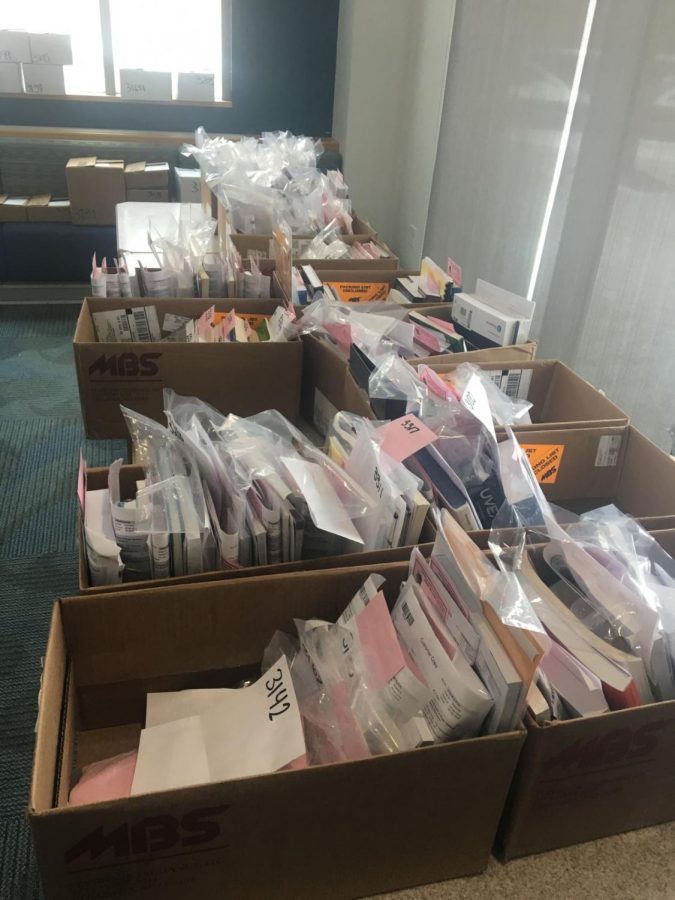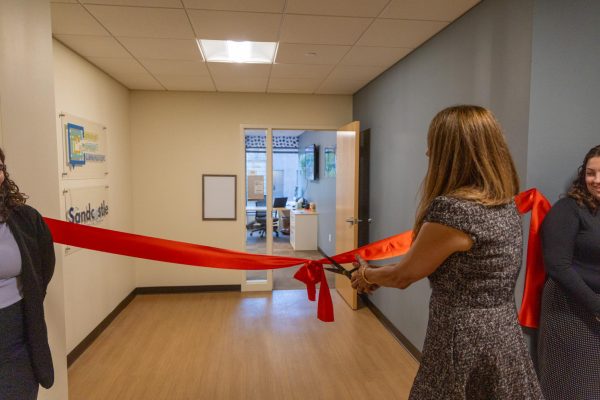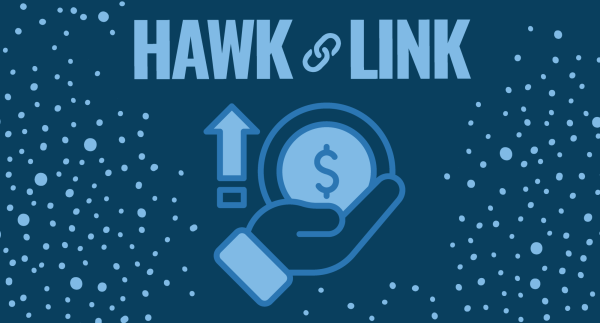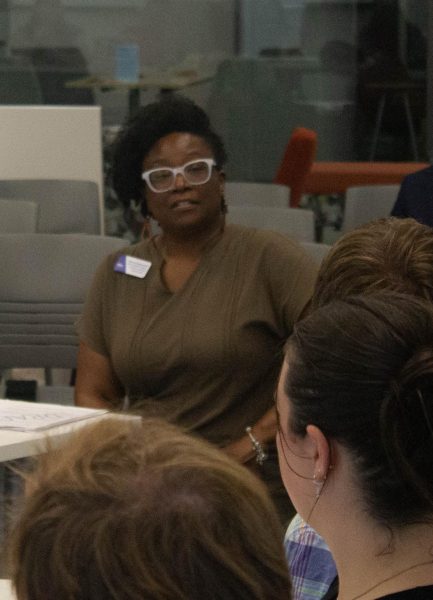Open Educational Resources program offers free textbook options
According to the College Board, on average annually, $1,168 is being spent per college student just on textbooks. For some, a semester of textbooks for six classes can be as ‘low’ as $300. Unfortunately, for others, that three-digit number might be the price of a single textbook.
The new Open Educational Resources program allows students and professors to imagine a scenario in which students weren’t required to waste time searching for textbooks. Better yet, students wouldn’t have to spend any money at all.
For a long time, students have worked out their own systems, comparing the prices of required textbooks sold by their university bookstore to that of those sold on sites like Amazon and Chegg. In order to compete with these third-party sellers, the bookstore began price matching textbooks. Still, students often spend inordinate amounts.
Junior Danielle Thommen described the traditional textbook-acquiring process as “unnecessarily complex,” adding that she spends a ridiculous amount of money on textbooks each semester. “I have to check all of the sites to find the cheapest option, and then buy them from all of these different sites. And it still ends up costing me hundreds of dollars,” Thommen said.
Instructional Technology Librarian Lindsey Gumb is one of the main advocates of the Open Educational Resources program on the Roger Williams University campus. For the past two years, seven professors are selected from an application pool to be part of the cohort, which means that 14 university faculty have gone through the program so far. The faculty work alongside Gumb, university Provost Bob Shea, and the Institutional Design department to select resources that are aligned with their course content.
Each faculty member who participates in the program commits to getting rid of the textbooks they previously used in lieu of searching for free and open resources to use instead. Throughout the program, participants work with the provost to assess their pedagogy.
Fears of academic freedom are among some of the concerns that faculty have when it comes to this new program. Another reason people are hesitant to participate is the assumption that free resources must imply resources of lesser-quality which, of course, no faculty wants to teach to their students.
A major advantage of the program is that there are no copyright permissions attached to it. A traditional textbook that you buy in the bookstore in produced by a publisher, which means that you’re not allowed to photocopy it as a professor for your class or as a student for your roommate.
“The push behind this movement is putting access to education in the hands of every student, regardless of their social standing or their ability to afford these resources,” said Gumb. “When you take away copyright restrictions of these resources, the faculty member is able to do so much more with them in the classroom, which allows the student to learn so much more.”
“We’re hoping that in a few years that this is the new norm, that students won’t have to spend $1,200 a year on textbooks,” Gumb added.
Arguably, there is a wide variety of textbook options for the introductory and basic-level courses. However, as the course topics become more advanced and specialized, the available Open Educational Resources decrease in number. That isn’t to say that they don’t exist, but it is certainly something that active members in the program are working on fixing.
“There’s definitely been a huge push to create more resources for higher-level, specialized courses that these faculty members don’t necessarily have the support in,” Gumb said, adding that certain areas are simply more difficult to find open resources for.
Paul Webb, a professor of Biology, is a strong supporter of the program. He laid out some issues that many professors face as they teach courses across campus. “In some cases, there is not a book that is appropriate for the class, and in others, there’s a book, but half of it you never touch and there’s stuff you want in the book but it’s not there.”
Webb found his solution by turning his online bulleted lecture notes into a textbook for his Oceanography course.
“I had a hard time requiring students to buy a $300 textbook that they may or may not really read,” Webb said, noting that in his particular course, the textbook was generally a supplement to the information provided through lectures.
Webb praised the “customizable” nature of the Open Educational Resources program, noting that in standard Oceanography textbooks, material from the final few chapters is not typically covered during the course. “I thought it might be nice to make a book that covers exactly what I teach in class, and it’s kind of oriented for New England and the oceans around this area and local phenomenon. That way it’s much more aligned with my actual courses.”
Another advantage is the fact that, once a book is part of the Open Educational Resources program, it is open to modification, which could allow for it to be tailored specifically to the course being taught and the topics covered by the professor.
“The survey results have been overwhelmingly positive,” Webb said, referring to surveys that he had given students regarding the Open Educational Resources program. “[The students] like that there is no cost and they like that it is tailored exactly to what we cover in class.”
Sophomore Marcus Haverill has not been in a class with a professor participating in the program, but he appreciates the concept of the program. “For me, it is all about the cost. I’m really not about paying hundreds of dollars for a book that, realistically, I’m not going to read cover to cover. It just doesn’t seem all that worth it to me.
Additionally, there is certainly an environmental element to the program. Most of the resources are located online, which means that newer versions of the same text can be edited directly on the computer. There is no need for hundreds of thousands of copies of a specific textbook to be reprinted each year as old editions are updated.
This also allows students to access their textbooks virtually. There are some students who prefer the physical copy of a textbook, which is why many resources can be downloaded as PDFs, or sent to a business that will print the textbook for them, for a fraction of what it would have cost had they been forced to buy it in the first place.
“My hope is that, for each person who leaves the program, that they go and tell their department members [about the resource],” Gumb said, adding that she hopes they will then continue “spreading it by word of mouth and changing the campus culture around open resources.” She also expressed her hope for increased student involvement, seeing it as an opportunity for students themselves to take ownership of the movement.






